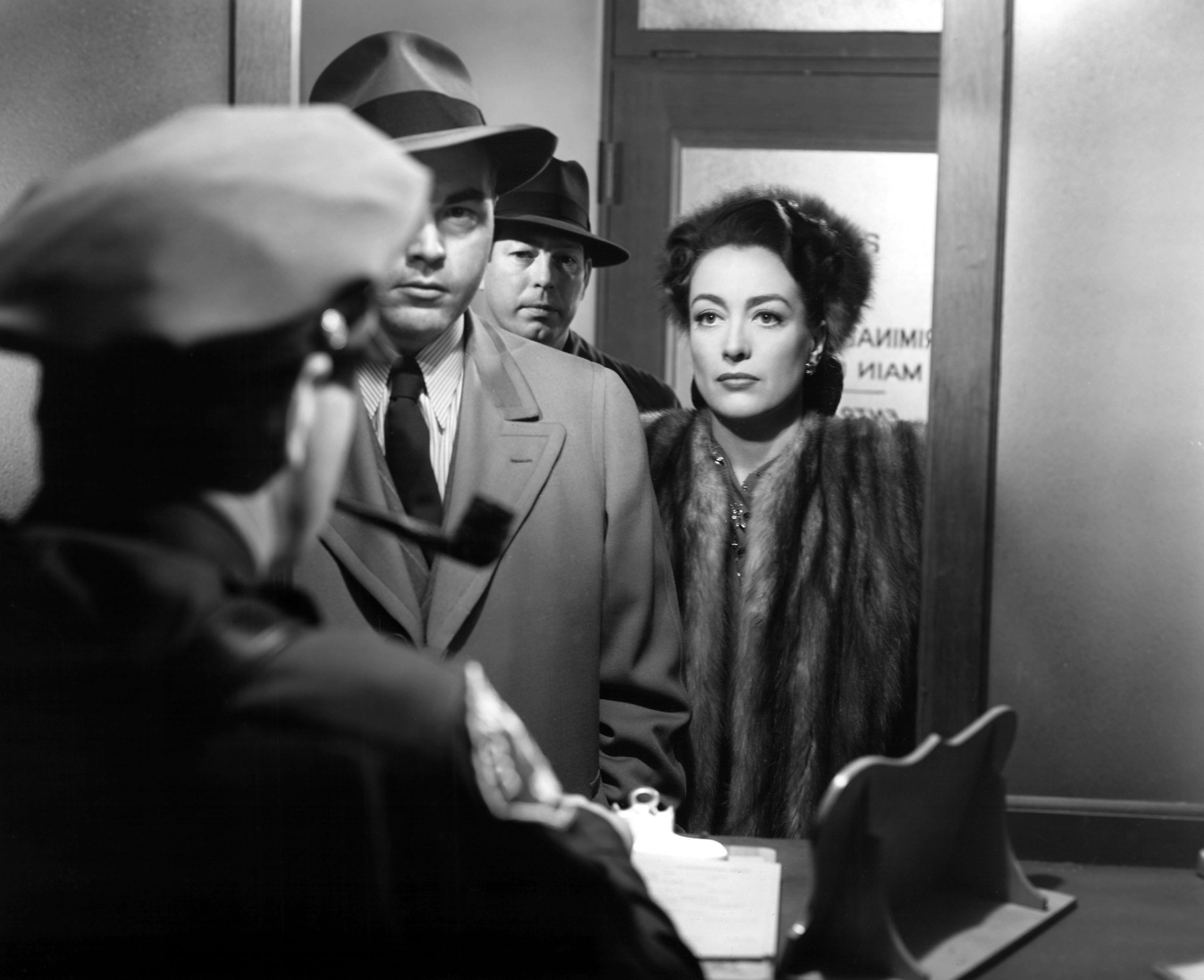Though Joan Crawford was a hugely successful Hollywood star throughout the 1930s—it was a stardom she herself willed into being, taking a hyperactive role in self-promotion that would leave even today’s biggest social-media influencers in the dust—it’s the Joan Crawford of the 1940s that tends to linger in our imagination. The square-shouldered, she-means-business fur coats, the hair artfully arranged into lush curls, those enormous, voracious eyes fringed with spidery mascara’ed lashes. That’s the Crawford of Mildred Pierce, a women’s drama nestled within the contours of your classic film noir, adapted from James M. Cain’s novel and directed by the great journeyman director Michael Curtiz. Crawford’s Mildred is a dutiful housewife turned restaurant tycoon, a woman who’ll do anything to give her spoiled daughter Veda (Ann Blyth) the best of everything. She loses one good man, Bruce Bennett’s Bert Pierce, and forms an ill-advised union with another, Zachary Scott’s Monty Beragon—you can tell from his mingy mustache that he’s no damn good. Mildred suffers but perseveres. At one point she acknowledges, with a humility that’s almost demure, that she’s made grave mistakes in her life. And you believe it, you buy Mildred’s humility and vulnerability, because Crawford is more of a sorceress than a mere actress, willing you to believe in whatever emotions she’s putting onscreen. There were relatively few women directors working in the 1930s and ’40s, but Crawford’s performance—not to mention the mettle she showed in conducting her career—is a prime example of how actresses of her era were able to exercise their authority in front of the camera. And while we’ve all heard plenty about what kind of mom Crawford was in real life, as a performer she was generally said to be the consummate professional. She participated in Blyth’s screentest because she believed in the younger actor’s talent and thought she’d be ideal to play Veda. She knew that having the best people around her would make her look good, too. And that right there is power.
- The 100 Most Influential People of 2024
- Coco Gauff Is Playing for Herself Now
- Scenes From Pro-Palestinian Encampments Across U.S. Universities
- 6 Compliments That Land Every Time
- If You're Dating Right Now, You're Brave: Column
- The AI That Could Heal a Divided Internet
- Fallout Is a Brilliant Model for the Future of Video Game Adaptations
- Want Weekly Recs on What to Watch, Read, and More? Sign Up for Worth Your Time
